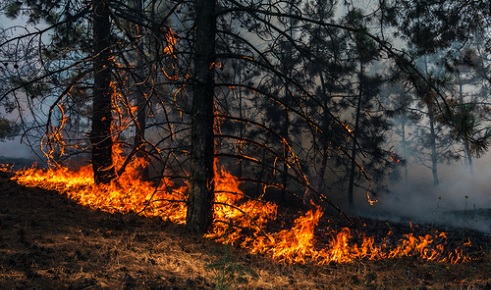Bioscience must treat climate change for the global emergency that it is

The COVID-19 pandemic has shown what biology can do in a crisis. Can we focus efforts and resources in the same way for climate change?
June 1st 2021
To date, 1,921 jurisdictions and local governments in 34 countries – covering 826 million citizens – have declared a climate emergency[1]. Civil disobedience movements, such as the School Strike for the Climate have raised public awareness of the scale of the problem and have moved the dial on action[2]. In a few short years, climate denial has become an irrelevance, with calls for urgent action on climate change becoming louder and clearer. Polls in the summer of 2019 reveal that 85% of Britons are now concerned about climate change[3].
So what can we as biologists do about it? Well, not everything! Climate change is complex, and it is not all about biology – we need to be part of multi-disciplinary teams to tackle the issue. We need atmospheric and ocean chemists and physicists to understand the processes of climate change, and we need engineers to design and build low carbon technologies that will help us to transition to a net zero economy and lifestyles. But – biology is really important for climate change, and we have a big role to play.
I work on how the land can be used to mitigate climate change. Soils and vegetation contain about three times more carbon than is in the atmosphere – so small changes in carbon pools on land and in the ocean can have a big effect on climate. If soil and vegetation carbon pools can be increased, the land can be used to lock carbon out of the atmosphere and help to tackle climate change right now. My work focuses on how we reduce greenhouse gas emissions using land management, and how we can maximise carbon storage – while also delivering to other aspects of sustainable development[4].
 Small evidence-based changes to vast carbon pools such as soil or woodland could help minimise the impact of emissions as society transitions to a low-carbon economy.
Small evidence-based changes to vast carbon pools such as soil or woodland could help minimise the impact of emissions as society transitions to a low-carbon economy. Professor Pete Smith FRSB is chair in plant & soil science at the University of Aberdeen
(1) Climateemergencydeclaration.org/
(2) Thackeray, S.J. et al. Civil disobedience movements such as School Strike for the Climate are raising public awareness of the climate change emergency. Global Change Biology 26, 1042–1044. doi: 10.1111/gcb.14978 ( 2020).
(3) Ipsos Mori Polling on Climate Change, August 2019.
(4) Smith, P., et al. Which practices co-deliver food security, climate change mitigation and adaptation, and combat land-degradation and desertification? Global Change Biology 26, 1532–1575 (2020).
(5) Smith, P. et al. Impacts on terrestrial biodiversity of moving from a 2ᵒC to a 1.5ᵒC target. Philosophical Transactions of the Royal Society, A. 376, 20160456 (2018).
(6) Kell, D.B. Breeding crop plants with deep roots: their role in sustainable carbon, nutrient and water sequestration. Annals of Botany 108, 407–418 (2018).
(7) Jørgensen, S.V., Hauschild, M.Z. & Nielsen, P.H. The potential contribution to climate change mitigation from temporary carbon storage in biomaterials. Int J Life Cycle Assess 20, 451–462 (2015).
(8) Rogelj, J., Huppmann, D., Krey, V. et al. A new scenario logic for the Paris Agreement long-term temperature goal. Nature 573, 357–363 (2019).
(9) The Stern Review: The Economics of Climate Change (LSE, 2006).


